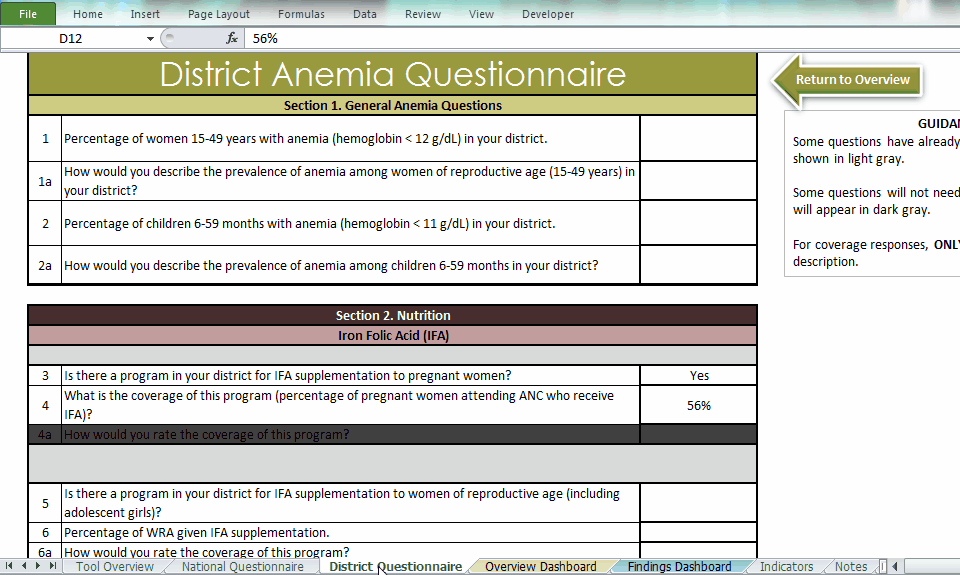

The District Assessment Tool for Anemia (DATA) is a generic toolkit that helps districts assess their current anemia situation. SPRING developed DATA to assist countries in strengthening anemia programming at the district level.
Anemia is an urgent public health problem that affects children and women throughout the life-course and results in a high burden of morbidity and mortality. Anemia is caused by multiple factors, most notably, iron and other nutrient deficiencies, malaria, helminthes, non-specific inflammation, and genetic blood disorders. Preventing and controlling anemia require an understanding of the leading causes of anemia in a given setting and developing integrated programs to address these underlying causes. As governments decentralize, it becomes even more important to work at the district level to promote integrated programs that address the leading causes of anemia.
DATA is created in Microsoft Excel and builds upon the software’s multi-page functionality. The data entered into the tool are transformed into easy-to-read dashboards. All of the Excel pages are designed to be printable sheets so that the user can also print them out for use in low-resource settings. DATA is meant to be used at the district level in the context of a facilitated district workshop or meeting.
The User Guide (download above) describes the rationale, structure, and use of the tool, and is divided into 4 parts. Part 1 describes the need for reducing anemia and the role of DATA within those efforts. Part II provides an overview of the tool’s structure. Part III briefly highlights the use of DATA within a facilitated district workshop/meeting. Part IV provides key evidence for the anemia reduction interventions that have been suggested within the tool.
DATA will help district managers—
- determine the main factors that cause anemia in their setting
- identify enablers and barriers to addressing anemia
- prioritize interventions and identify actions to strengthen anemia-related programming.
The Facilitator’s Guide outlines the steps that a facilitator should follow in leading the district-level DATA workshop, but s/he can adapt sessions according to context.
DATA is intended to be used by district program managers and technical assistance providers to stimulate discussions, facilitate an analytic process, and develop a prioritized district anemia plan.
Watch these animations (below) for an overview of DATA's features





(0=no barrier; 1=somewhat barrier; 2=very much a barrier)





